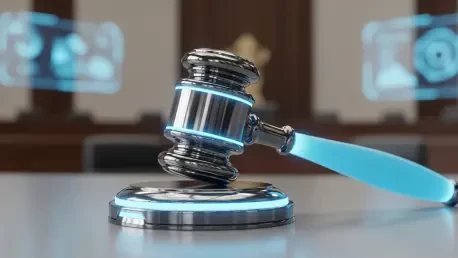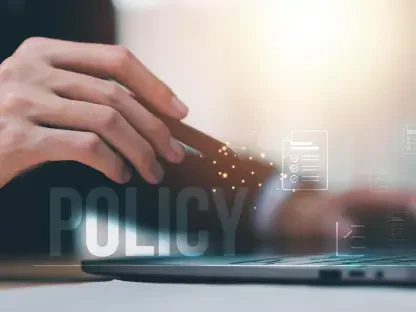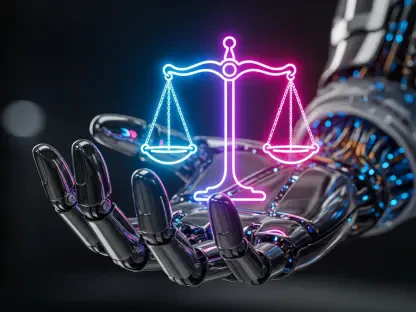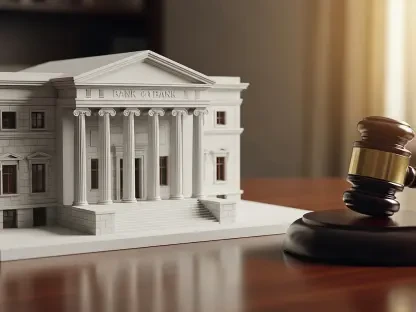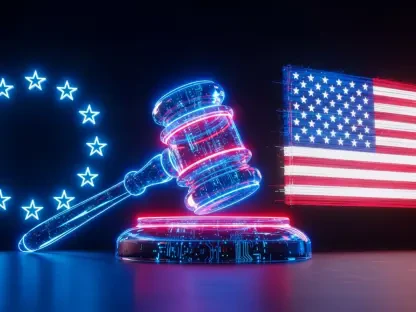Introduction to a Digital Dilemma
In an era where technology can fabricate reality with alarming precision, Ireland faces a pressing challenge to its democratic processes through the rise of deepfake videos, which threaten to manipulate voter perceptions. Picture a scenario where a presidential candidate appears in a widely shared video announcing their withdrawal from the race, only for it to be revealed as a meticulously crafted falsehood. This is not a distant possibility but a reality that struck during a recent election cycle, raising urgent questions about the adequacy of legal protections. The emergence of such deceptive content undermines trust in the electoral system, demanding immediate attention from lawmakers and technologists alike. This report delves into the intersection of deepfake technology and Irish law, exploring the current gaps and potential solutions to safeguard democracy.
Understanding the Deepfake Challenge in Irish Elections
Deepfake technology, which uses artificial intelligence to create hyper-realistic but fabricated audio and visual content, poses a significant threat to the integrity of elections worldwide, including in Ireland. These digital forgeries can depict individuals saying or doing things they never did, often with convincing accuracy. The potential to sway public opinion through such means is immense, as manipulated media can spread rapidly across social platforms, reaching vast audiences before the truth can surface.
A recent incident involving presidential candidate Catherine Connolly brought this issue into sharp focus. A deepfake video falsely showed Connolly announcing her withdrawal from the presidential race, creating confusion among voters and potentially influencing electoral outcomes. This event underscored how easily such content can disrupt the democratic process by presenting false narratives as fact, highlighting the vulnerability of Ireland’s electoral system to digital deception.
Protecting democratic integrity in Ireland is paramount, as trust in fair elections forms the bedrock of political stability. The ability of deepfakes to mislead voters not only jeopardizes individual candidates but also erodes public confidence in the legitimacy of results. As technology advances, the urgency to address this challenge grows, necessitating robust legal and societal responses to preserve the sanctity of Ireland’s democratic institutions.
Current Legal Landscape and Its Limitations
Fragmented Legal Protections
Irish law currently offers a patchwork of protections that fall short of addressing the nuanced threat posed by deepfakes. Existing frameworks such as defamation, privacy, passing off, and copyright provide limited recourse for individuals targeted by fabricated content. For instance, defamation laws apply only if the content damages reputation, while privacy laws are relevant solely when personal boundaries are breached, leaving many cases outside their scope.
These legal mechanisms fail to comprehensively protect personal identity attributes like voice and image as unified entities. Unlike tangible intellectual property, an individual’s likeness or vocal tone lacks specific legal recognition, creating a gap where perpetrators can exploit these elements without clear repercussions. This fragmentation means victims often struggle to find adequate remedies under the current system.
The absence of a cohesive legal approach to deepfake misuse reveals a critical blind spot in Irish legislation. Without targeted laws that explicitly address the manipulation of personal identity through digital means, individuals remain vulnerable to reputational harm and misinformation campaigns. This situation calls for a reevaluation of how the law can adapt to modern technological realities.
Case Study: Catherine Connolly Deepfake Incident
The deepfake video targeting Catherine Connolly serves as a stark illustration of the real-world impact of this technology on Irish elections. Circulated ahead of a pivotal presidential race, the video depicted Connolly announcing her withdrawal, a falsehood that could have swayed voter decisions if not addressed promptly. The incident highlighted how quickly such content can spread, amplifying its potential to distort public perception.
Connolly responded by filing a formal complaint with the Electoral Commission, seeking to hold accountable those responsible for the deceptive video. Her action brought attention to the inadequacy of existing legal tools to prevent or penalize such acts swiftly. The case also sparked discussions among policymakers and legal experts about the pressing need for updated regulations to counter digital misinformation in political contexts.
Beyond the individual harm to Connolly, this incident carries broader implications for election integrity in Ireland. It demonstrates how deepfakes can be weaponized to manipulate democratic processes, potentially disenfranchising voters through confusion and mistrust. This event serves as a wake-up call for authorities to prioritize legislative reform to protect candidates and the electorate from similar threats in future campaigns.
Challenges in Addressing Deepfake Threats
The battle against deepfakes in Ireland is fraught with technological hurdles that complicate detection and prevention efforts. Advanced AI tools used to create these forgeries often outpace the capabilities of detection software, making it difficult to identify manipulated content before it spreads. Additionally, the anonymity of creators and the international nature of online platforms pose significant enforcement challenges for Irish authorities seeking to hold perpetrators accountable.
Societal challenges further exacerbate the issue, as public misinformation fueled by deepfakes can erode trust in democratic institutions. In Ireland’s politically charged environment, where elections are often closely contested, the spread of false narratives can polarize communities and distort voter behavior. The risk of long-term damage to public faith in the electoral process is a concern that cannot be overlooked as digital threats become more sophisticated.
Balancing technological innovation with legal oversight remains a complex endeavor for Ireland. While advancements in AI detection offer hope, the rapid evolution of deepfake creation tools means that solutions must be agile and forward-thinking. Addressing these challenges requires not only legal reforms but also a cultural shift toward greater digital literacy among the populace to mitigate the impact of misinformation on society.
Legislative Pathways and Proposed Reforms
Ireland’s regulatory landscape is at a critical juncture, with growing recognition of the need for updated legal frameworks to tackle deepfake threats. Current laws, designed for a pre-digital era, lack the specificity required to address the unique harms caused by manipulated media. Policymakers are increasingly aware that without targeted legislation, the country remains exposed to risks that could undermine electoral fairness.
A promising development is the introduction of the Protection of Voice and Image Bill, proposed by Fianna Fáil TD Malcolm Byrne, which aims to establish legal protections for personal identity attributes. This bill represents a significant step toward recognizing voice and image as enforceable rights, akin to intellectual property, offering a potential shield against deepfake misuse. Its progression through the legislative process is being closely watched by legal and political stakeholders.
Intellectual property expert Jane Bourke has also advocated for the concept of a personality right, which would provide a comprehensive legal basis to protect individuals’ likeness and vocal identity. Such a right could serve as a deterrent to malicious actors and empower victims to seek redress more effectively. These proposed reforms, if enacted, could position Ireland as a leader in addressing the legal challenges posed by emerging technologies in democratic contexts.
Future Directions for Irish Law and Technology
Looking ahead, Ireland must integrate advancements in both legal and technological domains to combat deepfake threats effectively. On the legal front, the adoption of personality rights and similar protective measures could create a robust framework to deter the creation and distribution of fabricated content. Continuous updates to legislation will be necessary to keep pace with the evolving capabilities of AI-driven tools.
Technologically, emerging tools for deepfake detection hold promise for identifying manipulated media before it causes widespread harm. Collaborative efforts between tech companies and government bodies could accelerate the deployment of such solutions, ensuring that Ireland remains proactive in countering digital threats. Public-private partnerships may also play a role in funding research and development for more effective detection mechanisms.
Public awareness campaigns are equally vital, equipping citizens with the knowledge to critically evaluate digital content and recognize potential deepfakes. Global trends, such as stricter regulations in other jurisdictions, could inform Irish policy-making, fostering a harmonized approach to this international issue. By blending legal innovation, technological progress, and societal education, Ireland can build a resilient defense against the misuse of deepfake technology in elections.
Reflecting on Findings and Next Steps
Looking back, the exploration of deepfake threats in Irish elections revealed a stark gap in legal protections, exemplified by the Catherine Connolly incident, which exposed the vulnerabilities of the current system. The analysis underscored how fragmented laws struggle to address the unique harms of digital forgeries, while technological and societal challenges compound the difficulty of safeguarding democracy. The proposed legislative reforms and technological advancements discussed offer a glimpse of potential solutions that could have mitigated such risks if implemented earlier.
Moving forward, actionable steps must include the swift enactment of bills like the Protection of Voice and Image Bill to establish clear rights over personal identity attributes. Strengthening collaboration between lawmakers, tech experts, and international partners will be crucial to develop adaptive strategies that anticipate future threats. Additionally, investing in public education initiatives to combat misinformation will empower citizens to play an active role in protecting electoral integrity, ensuring that Ireland’s democratic foundation remains secure against the evolving landscape of digital deception.
